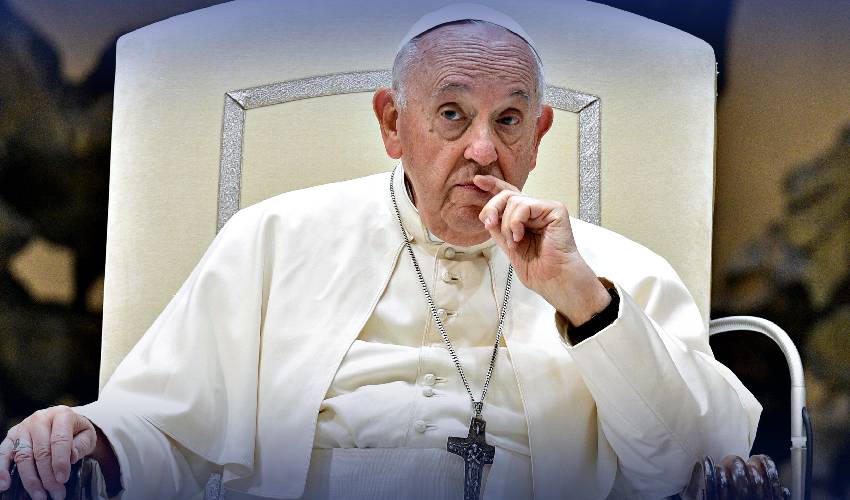United States President Donald Trump on Tuesday delivered his first address to Congress since returning to power, declaring that “America is back” and touting his administration’s swift policy shifts, while drawing sharp criticism from Democratic lawmakers.
Speaking in a prime-time televised session, the 78-year-old Republican leader took a victory lap, asserting that his administration had “accomplished more in 43 days than most administrations accomplish in four or eight years.”
His remarks were met with repeated applause from Republican lawmakers, though they also triggered protests from Democrats, some of whom walked out of the chamber in opposition.
Trump, who reclaimed the White House in January, used the speech to promote his hardline domestic policies, including a renewed focus on border security, deep tax cuts, and sweeping reductions in federal spending.
He also made repeated references to billionaire entrepreneur Elon Musk, who was seated in the gallery and received multiple ovations from Republican members of Congress.
Bitter partisan divides
The president’s remarks were met with immediate resistance from the Democratic benches. Within minutes of his speech, Texas Congressman Al Green was ejected from the chamber for heckling, refusing to sit down while shaking his walking stick at the president. Other Democrats held up placards with slogans such as “False,” “Musk steals,” and “That’s a lie!” while some chanted “January 6!” — a reference to the 2021 Capitol riot.
Despite the interruptions, Trump remained unfazed. “I look at the Democrats in front of me, and I realize there is absolutely nothing I can say to make them happy,” he quipped, drawing laughter from the Republican side.
The evening was marked by deep partisan rancor, reflecting the turbulence of Trump’s first weeks back in office. The speech, which ran for 100 minutes, was the longest presidential address to Congress in modern history, according to The American Presidency Project.
Economic and trade policies under scrutiny
Trump reiterated his administration’s commitment to what he termed an “economic revival,” vowing to cut taxes further and impose new tariffs on imports from Mexico, Canada, and China. The announcement came amid growing concerns from economists and business leaders about the potential impact on US exporters, particularly in the agricultural sector.
Acknowledging these concerns, Trump conceded that tariffs may bring “a little disturbance,” but assured American farmers and manufacturers that they would “have a lot of fun” as his policies take effect. However, the Nasdaq Composite index has already plunged more than 9% from its December peak, a decline that many attribute to uncertainties surrounding Trump’s aggressive trade stance.
Trump also pledged to balance the federal budget, even as he pushed for an ambitious tax-cut agenda that independent analysts warn could add over $5 trillion to the federal debt over the next decade. The Congressional Budget Office has cautioned that without significant spending reductions, the national debt—currently at $36 trillion—could reach unsustainable levels.
Foreign policy shifts raise concerns
Trump’s foreign policy statements have sent shockwaves across global diplomatic circles, particularly his stance on the Ukraine war. Days after pausing all US military aid to Ukraine, Trump revealed that he had received a letter from Ukrainian President Volodymyr Zelensky, in which Kyiv signaled readiness for peace talks. However, Trump did not address growing allegations that his administration is aligning too closely with Moscow, a shift that has unsettled US allies in Europe.
“Simultaneously, we’ve had serious discussions with Russia and have received strong signals that they are ready for peace,” Trump said. “Wouldn’t that be beautiful?”
His remarks come amid fears that Ukraine’s defense efforts could be weakened following the suspension of US assistance. While Trump has suggested that Ukraine should “settle” the conflict, a Reuters/Ipsos poll found that 70% of Americans—including two-thirds of Republicans—believe Russia bears greater responsibility for the war.
The president also reiterated his controversial desire to reclaim the Panama Canal and suggested that the US should acquire Greenland from Denmark, asserting that such moves were crucial to securing American geopolitical interests.
Elon Musk’s role in governance
Trump devoted significant portions of his speech to praising Elon Musk, lauding the billionaire’s contributions to economic policy and government efficiency. Musk, who has been working with the administration on federal restructuring efforts, received standing ovations from Republican lawmakers.
The president credited Musk’s Department of Government Efficiency with uncovering “hundreds of billions of dollars of fraud,” a claim that has yet to be independently verified. Under Musk’s guidance, the administration has undertaken a massive overhaul of the federal workforce, slashing over 100,000 government jobs and closing multiple agencies in an effort to cut costs.
Democratic response and political fallout
Democrats have struggled to counter Trump’s media-dominating approach, with his policies and rhetoric dominating the news cycle. The party’s official rebuttal was delivered by Senator Elissa Slotkin of Michigan, a former CIA analyst, who criticized Trump’s tariff policies, cuts to healthcare, and alleged authoritarian leanings.
“Our democracy is built on shared governance, not one-man rule,” Slotkin said in a televised address. “We cannot allow reckless decisions to dismantle the foundations of our economy and our global alliances.”
As Trump forges ahead with his ambitious and controversial agenda, early polling suggests that his approval ratings remain volatile, with sharp divisions among voters. While his base remains steadfastly loyal, concerns over inflation, trade policies, and the Ukraine conflict could pose significant hurdles as his presidency progresses.


























